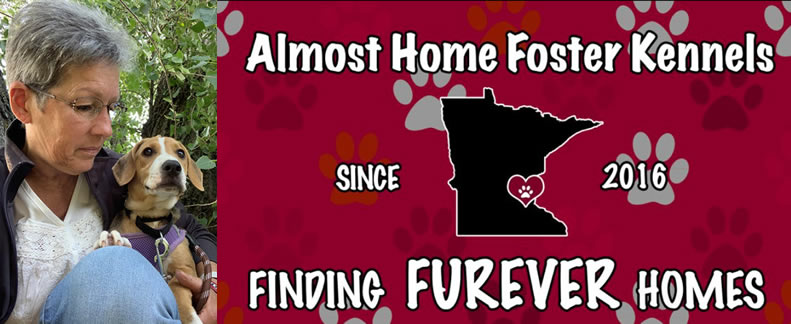https://www.goodrx.com/pet-health/dog/are-candles-bad-for-dogs
Are Scented Candles Bad for Dogs? How to Keep Your Pup Safe
Published on December 16, 2022
Key takeaways:
-
Candles can add to the ambiance and fragrance of your home. But many scented candles contain toxic chemicals that can harm dogs.
-
Fragrances can cause an allergic reaction or irritate existing respiratory problems in dogs.
-
If you burn candles, choose unscented candles made of soy, beeswax, or vegetable wax.

People enjoy lighting candles to set a mood, add a seasonal scent, or make their homes smell less like a dog’s den. However, the aromas wafting from the burning candles could be toxic to your dog.
Many scented candles contain poisonous substances that are also used as pesticides or plastic softeners. Some of these chemicals can cause breathing problems for your pup. Or, worse yet, they can build up in the dog’s (and human’s) system over time, increasing the risk of cancer.
Before you light a candle, learn which chemicals to avoid, how to choose safe candles to burn around your dog, and pet safety tips for burning candles around curious canines.
Are candles bad for dogs?
Whether or not candles are bad for dogs depends on several factors, including:
-
The candle’s ingredients
-
Whether or not your pup has any existing breathing issues
-
Where the candle is placed
-
Whether it has a flame or runs on batteries
-
Supervision
Some candles contain chemicals that, when burned, can be bad for you and your pup to breathe in. Dogs with asthma or other breathing difficulties shouldn’t be exposed to candles at all.
Candles can also pose a fire or burn risk. Whether or not you choose to burn candles, you shouldn’t leave a dog alone in an area with a lit candle. Interested dogs can get burned by candles if they’re not placed out of paw’s reach.
Flameless candles can be a safer alternative. But they should also be positioned where curious canines can’t get to them. Flameless candles usually run on batteries that can cause internal burns or other severe injuries if ingested.
Are scented candles toxic for dogs?
Yes, some scented candles can be poisonous to pets.
If you are a fan of scented candles, you might want to try unscented, for your dog’s sake. Just like with humans, fragrances and scented oils can trigger an allergic reaction or irritate existing breathing problems in our canine companions.
Signs your dog may be having a reaction to a candle include:
-
Watery eyes
-
Sneezing
-
Coughing
-
Itching
-
Wheezing
In addition, the essential oils in many scented candles can potentially poison your pup. Essential oil poisoning can lead to symptoms like:
-
Vomiting
-
Tremors
-
Breathing issues
-
Drooling
-
Low blood pressure
-
Gastrointestinal tract ulcers
-
Low heart rate
-
Low body temperature
-
Seizures
-
Paralysis in their hind legs
-
Skin irritation
-
Liver failure
-
Kidney failure
The following essential oils are toxic to your pet, and you’ll want to avoid these in candle form as well:
-
Tea tree (melaleuca)
-
Wintergreen
-
Ylang-ylang
-
Pine
-
Cinnamon
-
Pennyroyal
-
Citrus (d-limonene)
-
Sweet birch
-
Peppermint
Do candles have harmful ingredients?
Yes, many candles contain harmful toxins, especially naphthalene and phthalates.
Naphthalene
Naphthalene, a substance made from crude oil or coal tar, is used as an insecticide and pest repellent. It is also used to make plastics, resins, fuels, and dyes. Products that contain naphthalene are solids that turn into toxic gas. This is why they are effective at killing insects and keeping some animals away.
In animals, naphthalene breaks down in ways that can affect a dog’s lungs and eyes. And animal studies indicate it causes cancer, according to the World Health Organization (WHO).
While we don’t have research on naphthalene in candles specifically, we do know what can happen based on mothballs. If your dog inhales mothballs that contain naphthalene, they can experience:
-
Digestive tract irritation
-
Liver damage
-
Kidney damage
-
Blood cell damage
-
Swelling of the brain
-
Seizures
-
Coma
-
Respiratory tract damage
-
Death
Phthalates
Phthalates, also called plasticizers, are used to soften plastics. These chemicals are in hundreds of household products, including candles, soaps, plastic packaging, and makeup.
Research suggests exposure to phthalates can cause cancer in pets. Other research indicates that several phthalates can cause issues with sexual function, fertility, or development.
Phthalates must be listed as an ingredient on product labels, unless they’re added as part of the “fragrance.” In this case, the current law allows them to be labeled only as a “fragrance,” even if they make up 20% or more of the product.
What should I do if my dog eats a candle?
If your dog eats a candle or part of a candle, the foreign object could get stuck in the gastrointestinal tract. At best, your pup will develop an upset stomach. However, your dog could develop an intestinal blockage if the object cannot pass on its own. In that case, they may need surgery to remove the candle.
If your dog eats a scented candle, they may also have been exposed to a toxic fragrance or essential oil.
In either case, your best option is to contact your veterinarian or call a pet poison hotline immediately. They can advise you on the best course of action. There are two hotlines you can call. Keep in mind each charges $75 for a consultation:
What should I do if my dog burns itself on a candle?
If your pup suffers a burn, you should treat it seriously because of the potential for infection or other complications.
You can treat the burn immediately by placing the burned area in cool water or saline solution (a mixture of salt and purified water) or spraying it with one of these liquids. Then bring your dog to your vet or an emergency animal hospital as soon as possible.
Burn treatment can be complicated and may involve pain medication and antibiotics. Your vet will provide further direction after evaluating your pup’s injuries.
How can you safely burn candles around dogs?
All is not lost if your idea of the perfect evening at home involves chilling with candles and canines. Just keep the following safety tips in mind:
-
Never leave lit candles unattended. Dogs can mistakenly knock them over with the wag of a tail or a curious snout.
-
Choose unscented candles. If you must burn scented candles, read the ingredients carefully and look for candles labeled “dog safe.”
-
Keep candles out of your dog’s reach. Place them on high surfaces where they cannot accidentally burn fur.
-
Look for candles made of vegetable wax, soy, or beeswax. These are less likely to contain harmful chemicals.
The bottom line
Use extra care when burning candles around your canine companions. Several scented candles contain toxic chemicals that, when burned, can be harmful to dogs. Dogs with respiratory difficulties can be especially affected by the smoke from any candle.
Keep burning candles where your dog can’t reach them, and never leave them unattended. Call your veterinarian or a pet poison helpline immediately if your dog develops any breathing difficulty, has burned themself, or has eaten any part of a candle.
References
American Kennel Club Reunite. (n.d.). Keep the feast from the beast.
American Veterinary Medical Association. (n.d.). Household hazards.
BC SPCA. (2022). Fall toxins for your pet to avoid.
Benson, K. (2020). Updates on essential oils. Pet Poison Hotline.
Centers for Disease Control and Prevention. (2021). Phthalates.
Environmental Working Group. (2008). Polluted pets.
Gfeller, R., et al. (2018). Burns: First aid. Veterinary Information Network.
Jia, C., et al. (2010). A critical review of naphthalene sources and exposures relevant to indoor and outdoor air. International Journal of Environmental Research and Public Health.
Marshall, J. (n.d.). Essential oils and dogs. Pet Poison Hotline.
National Pesticide Information Center. (2010). Naphthalene.
National Pesticide Information Center. (2019). Insecticides.
Schmid, R., et al. (n.d.). Essential oil and liquid potpourri poisoning in dogs. VCA Animal Hospitals.
Schmid, R., et al. (n.d.). Holiday toxins for pets. VCA Animal Hospitals.
Tekin, K., et al. (2020). Companion animals get close to toxic aspects of anthropogenic world: Cytotoxicity of phthalates and bisphenol A on dog testicular primary cells. Cytotechnology.
Tello, L. H. (2013). Burns in small animals. Veterinary Information Network.
U. S. Food and Drug Administration. (2022). Phthalates in cosmetics.
World Health Organization. (n.d.). IARC research.



